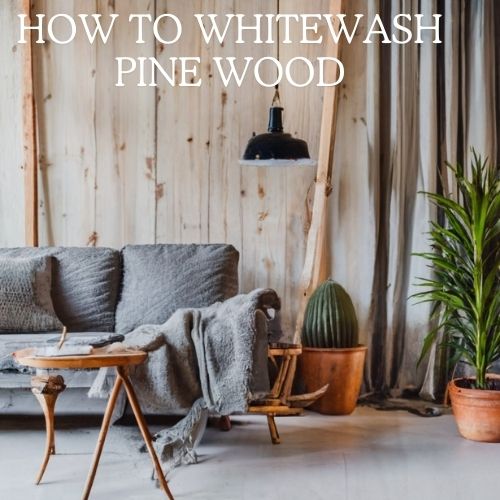Introduction
Whitewashing pine wood is a popular technique that imparts a timeless, rustic charm to furniture, walls, and various woodworking projects. In this comprehensive guide, we will take you through the step-by-step process of how to whitewash pine wood, providing insights, tips, and answering common questions to help you achieve a beautiful, weathered finish.

Understanding Whitewashing and Pine Wood
- What is Whitewashing?
- Define the whitewashing technique, its history, and how it differs from other wood finishing methods.
- Why Choose Pine Wood for Whitewashing?
- Examine the distinct attributes of pine wood that render it a perfect choice for whitewashing, encompassing its grain patterns and inherent variations.
Step-by-Step Guide on How to Whitewash Pine Wood
- Preparing the Pine Surface
- Discuss the importance of proper surface preparation, including sanding and cleaning, to ensure a smooth and even application of whitewash.
- Choosing the Right Whitewash Technique
- Explore various whitewashing techniques, such as traditional brushing, ragging, or pickling, and determine the best approach for your project.
- Selecting the Whitewash Mixture
- Guide on creating the perfect whitewash mixture, considering options like watered-down paint, lime wash, or commercial whitewashing products.
- Applying the Whitewash
- Walkthrough the step-by-step process of applying the whitewash, emphasizing even coverage and techniques for achieving desired effects.
- Allowing for Drying Time
- Stress the importance of allowing the whitewash to dry thoroughly between coats, providing tips on optimal drying conditions.
- Sealing the Whitewashed Pine
- Discuss the optional step of sealing the whitewashed pine for added protection and longevity.
Long-Tail Queries Explored
- Can you whitewash stained pine wood?
- Examine the feasibility of whitewashing pine wood that has undergone previous staining and offer recommendations for achieving optimal results.
- How to achieve a distressed look when whitewashing pine wood?
- Explore techniques for achieving a distressed appearance during the whitewashing process, including methods like sanding and layering.
- Is it possible to color tint the whitewash for a customized finish?
- Discuss the option of tinting the whitewash with color for a personalized touch, providing guidance on achieving different shades.
- Can whitewashed pine wood be stained later?
- Address whether whitewashed pine can be stained at a later time, outlining considerations and steps for this process.
- How to maintain and clean whitewashed pine wood surfaces?
- Provide tips on maintaining and cleaning whitewashed pine wood surfaces to preserve their appearance over time.
FAQs Section
Q1: Can I whitewash pine veneer furniture?
Yes, pine veneer furniture can be whitewashed following the same steps as solid pine, ensuring proper surface preparation for the best results.
Q2: What is the difference between whitewashing and pickling?
While both techniques involve lightening wood, whitewashing is typically achieved with a watered-down paint mixture, while pickling involves using a white or light-colored wood stain.
Q3: Should I use a primer before whitewashing pine wood?
A primer is generally not necessary before whitewashing pine wood, but it can be beneficial for certain projects, especially if the wood has knots or stains.
Q4: Can I whitewash outdoor pine wood furniture?
Yes, outdoor pine furniture can be whitewashed. However, it’s crucial to use a durable exterior-grade whitewash and seal the wood properly to protect it from the elements.
Q5: How long does a whitewashed finish typically last?
The longevity of a whitewashed finish depends on factors such as exposure to sunlight and wear. Routine upkeep and the need for occasional reapplication may arise over time.
Conclusion
In conclusion, whitewashing pine wood is a creative and transformative process that adds character and charm to various projects. By following this step-by-step guide, experimenting with techniques, and addressing common questions, you can confidently embark on your whitewashing journey. Whether you’re enhancing furniture or creating a whitewashed accent wall, the versatility of this technique allows you to achieve a range of aesthetic outcomes. Enjoy the timeless beauty of whitewashed pine wood in your next woodworking endeavor.
Not Sure What Are You Looking At? Check the below guides:
Is a Cedar Tree a Pine Tree
How Long Does Cedar Last in the Ground
